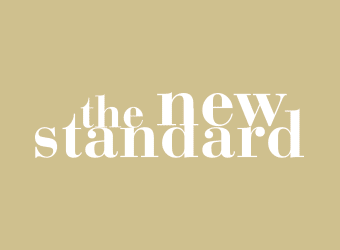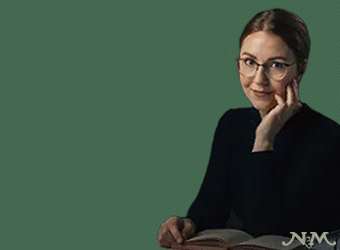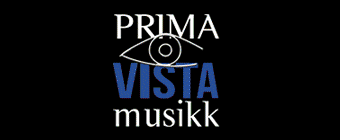The test-pieces that will be performed by bands at the Finals of the National Championships of Great Britain have been announced.
The challenging works selected by the Music Panel come from the pens of Simon Dobson, Joseph Horovitz, Stephen Bulla, Kevin Houben and Kenneth Downie and will be performed at Cheltenham on the weekend of the 17th/18th September and London on 8th October.
Championship Section:
Journey of the Lone Wolf (Simon Dobson)
Published by Faber Music
The 20 bands at the Royal Albert Hall will perform Simon Dobson's evocative portrait of Hungarian composer Bela Bartok — whose own journey in life was marked by a sense of isolation and singularity.
'Journey of the Lone Wolf' was commissioned by Prof Nicholas Childs in 2013 for the Black Dyke Band, and received its UK premiere at the 2014 Festival of Brass. It has subsequently been used as a set-work as well as own-choice selection throughout the banding world.
The composition explores the complexities of a troubled soul; from Bartok's work in recording the disappearing folk songs and musical culture of the Balkans, to his loveless isolation in America and rather cold fascination with jazz.
He was repulsed by the evils of fascism, yet was unable to develop or maintain relationships even with those who shared his political and cultural outlook. He died a lonely man, isolated and almost forgotten — his funeral attended by a handful of people.
The composition explores the complexities of a troubled soul; from Bartok's work in recording the disappearing folk songs and musical culture of the Balkans, to his loveless isolation in America and rather cold fascination with jazz4BR
First Section:
Ballet for Band (Joseph Horovitz)
Published by R. Smith & Co
Composer Joseph Horovitz will celebrate his 90th birthday in May, with 2016 already seeing a welcome retrospective of some his finest works at the RNCM Brass Band Festival in Manchester in January.
It included 'Ballet for Band', written in 1983 at the set-work for the National Final at the Royal Albert Hall, and which has since become one his most popular major test-pieces — played on numerous occasions throughout the banding world.
It is a wonderfully elegant, mischievous composition — a brass band ballet, not of programmatic intent but of fertile imagination; beautifully crafted with a delicacy of touch as light on its feet as any arabesque.
The composer has admitted that he had a clear vision of the characters that inhabit his score, yet has never divulged any details — leaving the bands and listeners, as he says, "...to exercise their own imaginations rather than being influenced by mine!"
Second Section:
Images for Brass (Stephen Bulla)
Published by Curnow Music
Stephen Bulla's highly descriptive work was written to commemorate the 50th anniversary of the Battle of Iwo Jima, which took place between the 19th February and 26th March 1945.
Casualties on both the American and Japanese sides were horrendously high before the famous image of the raising of the flag on top of Mount Suribachi signalled the end of one of the most significant and terrifying Pacific conflicts of the Second World War.
The work received its first performance by the brass choir of the U.S. Marine Band at the National Cathedral in Washington D.C. and is divided into four programmatic sections.
The first portrays the sense of anticipation before conflict ('Prologue'), before the arduous journey to the scene of the battle ('Approach by Sea') is followed by introspection and prayer featuring the hymn tune 'Melita' ('Chorale Prayer'), and finally, the hostile confrontation itself ('Engagement')
There are frequent references to the 'Marine's Hymn' and the US National Anthem, particularly in the closing bars, depicting the ultimate raising of the American flag.
Third Section:
Lake of the Moon (Kevin Houben)
Published by Scherzando Music
Kevin Houben's colourful work was commissioned in 2008 by the Royal Fanfare Brass Band De Kempengalm Vlimmeren (Belgium) in honour of their 100th anniversary.
However, its inspiration lies in a different continent and from a different age; that of the Aztec people as they headed south in the 14th century through Central America looking for a new home — the spiritual 'Lake of the Moon'.
They found it at Texcoco Lake within the Valley of Mexico, where they built their city of Tenochtitlan — later the basis for the modern day Mexico City.
The music itself is diverse — containing fragments of oriental and South American rhythms, and even a hint of eastern Russia, whilst the music follows the Aztec journey of hope, expectation, danger and eventual fulfilment as they finally find their new spiritual home.
Fourth Section:
Music from Kantara (Kenneth Downie)
Published by Just Brass
Despite the exotic sounding title, the origins of Kenneth Downie's fine composition are somewhat more prosaic.
When the composer and his wife moved into a new home they were intrigued to find it called 'Kantara'. Not wanting to upset the outgoing owners, and wishing to find out more, they decided to keep the name.
Some judicious research found that Kantara was a ruined castle in Northern Cyprus which the previous owners had once visited. A picture of it was left hanging on the wall of the house for the new owners to enjoy.
Written in 1993 for the National School Band Association Composer Competition, it has subsequently been used at youth and senior level — from the National Youth Band Championships of Great Britain to the Pontins Championship.
The three-movement work is in no way descriptive, but each has individual character — from a light hearted 'spiritoso' followed by a short lyrical middle section to an animated 'presto' finale.



















